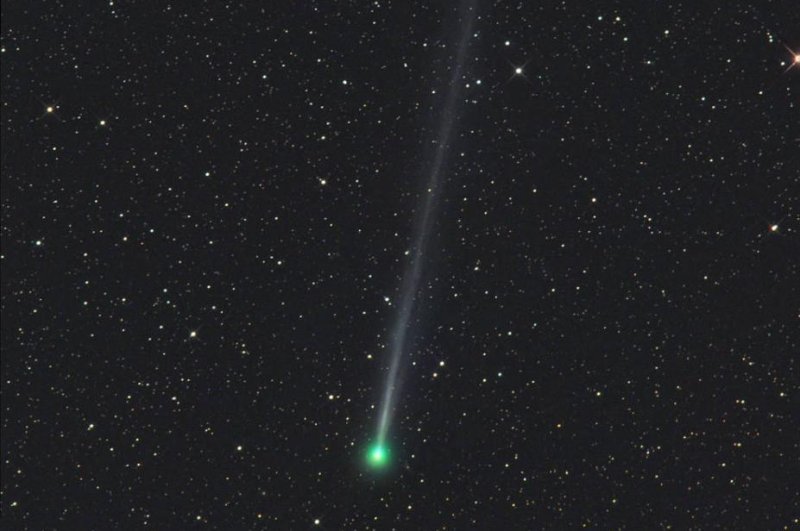Comet 45P, as seen with a telescope on December 22 from Namibia. Photo by Gerald Rhemann/NASA
Nov. 22 (UPI) -- Fresh observations of comet 45P suggest the icy orb is an oddball, boasting a chemical composition unlike any comet studied thus far.
Researchers at NASA's Infrared Telescope Facility in Hawaii tracked the comet as it whizzed past Earth earlier this year. Scientists hoped to glean new details about the ices that form Jupiter-family comets.
As comets barrel toward the sun, some of their ices melt and gases trapped in the comet's nucleus are released into the comet's thin atmosphere. Scientists used IRTF instruments to measure nine gases released by comet 45P. The iSHELL high-resolution spectrograph can pick up the infrared chemical fingerprints of a handful of gases all at once.
Some gases released by comets can form the molecular building blocks that sparked life, including sugars and amino acids, which is why some planetary scientists believed comets delivered the biochemical spark that begat life on Earth.
Gases trapped in the nucleus of comets also serve as a kind of window to the past. The nucleus preserves the chemical conditions of the early solar system, when many comets were first formed.
Researchers were particularly keen on detecting carbon monoxide and methane, a pair of gases difficult to detect in Jupiter-family comets.
Their analysis showed 45P is depleted of almost all of its carbon monoxide. The gas easily escapes into space during a comet's trip near the sun, so the discovery wasn't all that surprising. What was surprising, however, was that scientists measured high levels of methane.
Methane also escapes easily into the comet's atmosphere, or coma, and then space. A comet low in CO should be low in CH4 too.
Scientists suggest a couple of scenarios for the anomaly. They say it's possible the methane is trapped in a different type of ice that doesn't melt as easily. Or, they hypothesized, the CO reacted with hydrogen to form methanol. Observations show 45P has higher concentrations of frozen methanol than other Jupiter-family comets.
Such a reaction reveals the challenge of studying a comet's chemical composition. Researchers have to try to figure out to what extent newer chemical reactions have augmented the comet's time capsule qualities.
"Comet scientists are like archaeologists, studying old samples to understand the past," Boncho Bonev, an astronomer at American University, said in a news release. "We want to distinguish comets as they formed from the processing they might have experienced, like separating historical relics from later contamination."
Researchers hope analysis of forthcoming short-period comet flybys will provide context to their 45P observations, which they detailed in the Astronomical Journal.
"This research is groundbreaking," said Faith Vilas, the solar and planetary research program director at the National Science Foundation. "This broadens our knowledge of the mix of molecular species coexisting in the nuclei of Jovian-family comets, and the differences that exist after many trips around the sun."















